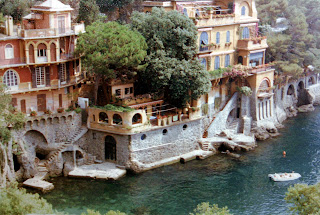Ant's blog: diabetes and travel.
After six years at university the need to travel again raised it's head (actually, the travel head had been lifting for a few years)! In early 1983 my mate and I decided to hitch around the world. Plans were planned, sleeping bags and rucksacks bought, all funded by selling everything that we couldn't squeeze into a rucksack.
The original idea was to hitch through Africa to London and then, who knew? For various reasons, the Africa trip was cancelled and replaced with a tour of Zimbabwe (then Rhodesia) about a year after a horrific guerrilla war ended. The game reserves were empty of tourists and the rangers were more than happy to invite us on their patrols. We spent two months touring Victoria Falls, Matusadona, Rhodes Matopas, Gona-Re-Zhou, Hwange, Chimanimani, and Rhodes Matopas Game Reserves, often on patrol with rangers.
That trip was followed by the trip to Europe. My mate would fly from Zimbabwe to London a week ahead of me travelling from Johannesburg.
My Dad asked how I was going to manage diabetes care during the trip. That needed some thought. So I bought a small flask (remember insulin needed to be kept in a fridge and in the 80s there was no rucksack-sized fridges). I also went for a diabetes check up with my doctor, just to make sure. But it would be a formality, I felt fine, strong in fact. I was a wildlife biologist with an award-winning MSc about to embark on the trip of a life time.
The next day I was in hospital. They found blood in my urine and that my urine drainage system was partly blocked. Quick biology lesson: you have two kidneys which filter blood and pass waste material (urine) down a pair of ureters into the bladder. The bladder stores urine until it is voided from the body via a tube, the urethra. My left ureter was blocked! Urine was backing up into the left kidney. A catastrophic situation and not ideal for hitch-hiking around Europe. In fact the doctors felt that it was not ideal for anywhere except the operating theatre which is where I found myself 12 hours later.
I was in hospital for three weeks accompanied by drains into my gut cavity, catheters, drips, and a host of bloody bags attached to a stand which I painfully staggered around with. I was on bilharzia treatment, antibiotics, all fuelled by soup. The pain was incredible.
Talking of pain, the nurses were great and kept me going with their jokes and comradery. I was really looking forward to the time when the catheter drain from my bladder was to be removed. One dryly said "It will feel like peeing razor blades! We'll listen for the screams and give you extra pain killers". What a bunch!
After three weeks all the drains, catheters, plugs and drips were removed and I was discharged on 13 April. Blood sugars all over the place and very difficult to control using one daily morning injection only. Temporarily, I used an additional single dose of 4 units of Actrapid to bring the high sugars down.
I went to airport on 28 May to start trip to Europe. Very excited! At last! At the departure lounge, with rucksack on my back, I suffered a major hypo (low blood sugar causing confusion) and went into a coma. I awoke in a hospital thinking I was in Europe and a bit more than a tad confused. The effects of the surgery had only just started impacting my blood sugar control.
I discharged myself from the hospital the next day (I had Europe visit) and went straight to organise another ticket. Two days later I was in London with my mates from university. I could not believe I was finally there!
I spent eight months travelling through Europe with a devil may care attitude. Get on the road, get a lift, if it dropped us at a place we liked, stay there until we wanted to move on. When I ran out of insulin I bought it locally. Unfortunately, in Europe insulin strength was 40 units per ml and I was using 80 units. With this concentration my daily dose exceeded the volume of the glass syringe and I needed two injections. But needles were limited so I had to reuse needles with very basic sterilisation (small vial of alcohol!). Sterilisation in its broadest meaning.
The small flask filled with water that I used to keep the insulin cool, worked well enough to keep my blood sugars vaguely under control. I know they were vaguely in target because I had bought an early prototype glucometer that used a finger prick of blood to measure blood sugar. This was about the size of a small shoe box and the reagent strips were largely unobtainable in Europe so I had to eke them out - about one test every four or five days perhaps. When they ran out the damn thing became a burden in an increasingly heavy rucksack.
The trip was amazing. It restored my faith in people who were kind and generous. Except one lot of lads who picked us up. They were stoned out of their minds and screamed at us to put our rucksacks against the car doors so that we couldn't escape! We managed to make a break at a traffic light when they appeared to forget we were in the car.











No comments:
Post a Comment